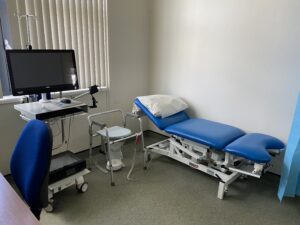A hysteroscopy is a procedure used to examine the inside of the womb (uterus).
It’s carried out using a hysteroscope, which is a narrow telescope with a light and camera at the end. Images are sent to a monitor so your doctor or specialist nurse can see inside your womb.
The hysteroscope is passed into your womb through your vagina and cervix (entrance to the womb), which means no cuts need to be made in your skin.
A hysteroscopy can be used to:
- Make an assessment following postmenopausal bleeding – most women have a vaginal ultrasound scan on the day of the appointment. This means a small probe is inserted into the vagina which looks at the ovaries, uterus (womb), womb lining and the kidneys. If your womb lining is thicker than 4mm, then we would recommend you have a hysteroscopy that day and a sample of the womb lining would be taken.
- Diagnose and manage women with heavy or irregular periods
- Novasure endometrial ablation for management of heavy periods
- Diagnose and manage women found or suspected to have womb polyps or thickened lining, fibroids or scar tissue within the womb cavity which may have been found during an ultrasound scan
- Support outpatient treatment of small fibroids (benign growths of the smooth muscle layer of the womb which may be seen inside the cavity of the womb)
- Insert a Mirena coil for the treatment of heavy periods
- Investigate fertility problems or recurrent miscarriage
- Manage endometrial hyperplasia, a condition where the womb lining becomes abnormally thickened
- Support the morcellation (removal) of retained products of conception.
